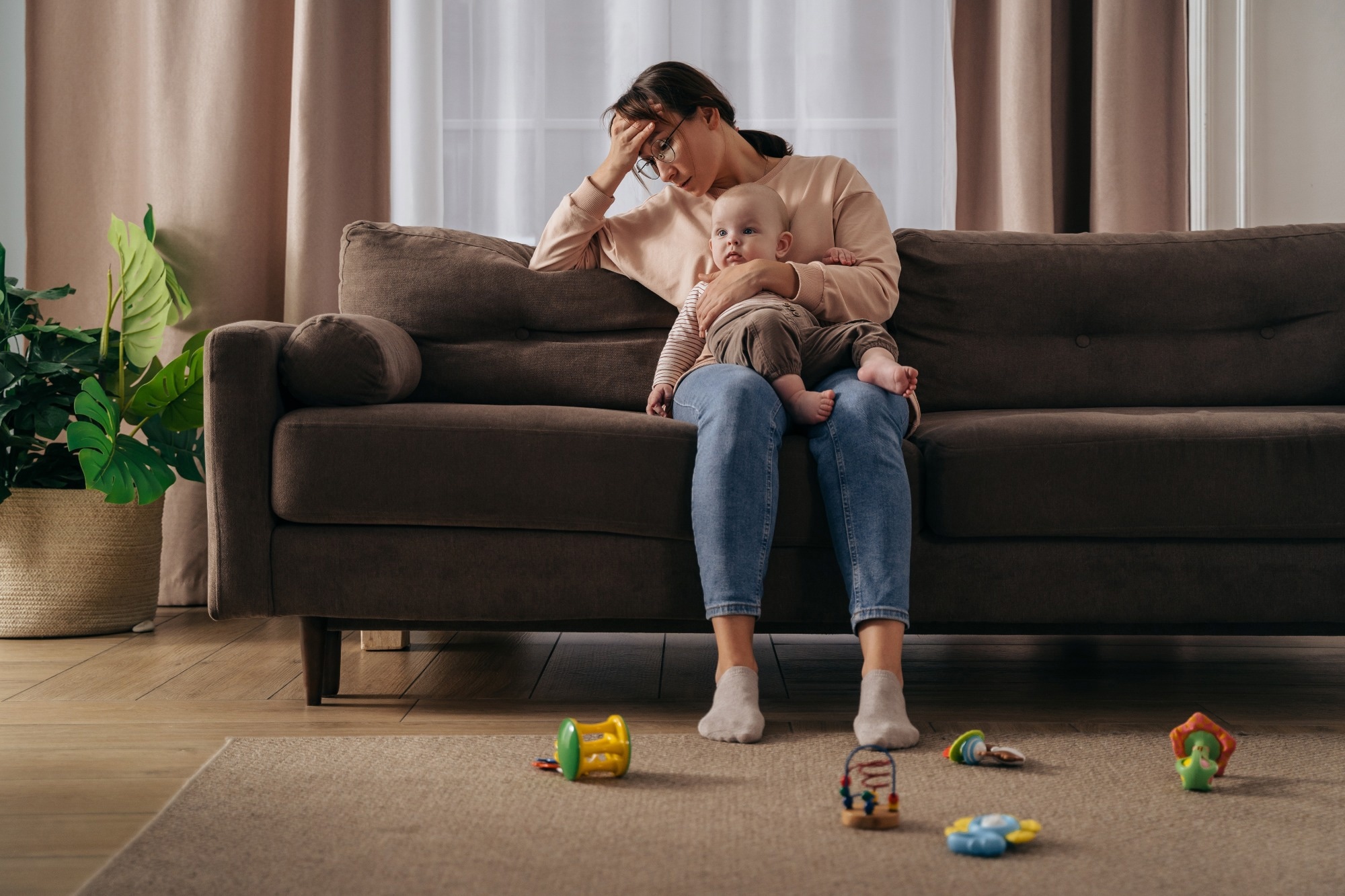A recent study posted on the medRxiv* preprint server explores the relationship between genetics and postpartum psychosis.

 *Important notice: medRxiv publishes preliminary scientific reports that are not peer-reviewed and, therefore, should not be regarded as conclusive, guide clinical practice/health-related behavior, or treated as established information.
*Important notice: medRxiv publishes preliminary scientific reports that are not peer-reviewed and, therefore, should not be regarded as conclusive, guide clinical practice/health-related behavior, or treated as established information.
Background
Childbirth can trigger postpartum psychosis, a severe psychiatric condition. If untreated, it can pose a high risk of suicide and infanticide. Research has shown that genetic factors might be driving the disorder risk; however, the exact degree of importance is still unclear.
The most frequent onset of postpartum psychosis occurs within one month after childbirth. The onset is quite quick, and the presentation is characterized by mood symptoms (e.g., depression and mania), cognitive disorganization and confusion, psychotic symptoms, sleep problems, and severe anxiety.
Postpartum psychosis is not acknowledged as a standalone disorder in the Diagnostic and Statistical Manual of Mental Disorders (DSM), which makes its diagnosis and treatment difficult.
The risks around postpartum psychosis are notably insufficiently researched. Certain biological factors, such as neuroimmune dysregulation and structural brain changes, have been shown to influence postpartum psychosis. However, the genetic findings are limited.
About the study
The study presents a population-based cohort analysis of the relative recurrence risk of postpartum psychosis. Data from Swedish national registers were used to measure familial risk by estimating relative recurrence risk. Cousins of birthing parents and full siblings who had experienced this disorder following their first liveborn single childbirth were considered.
The relative recurrence risk is widely used to quantify the risk of developing a condition in one individual based on the presence of the identical condition in another member of the family. It only indicates the increased likelihood of the appearance of a condition in another individual within the family, but not the actual recurrence.
This cohort comprised 1,633,535 birthing parents from the Swedish nationwide register. Among them, 2,489 experienced postpartum psychosis within the first three months of their first-ever childbirth. The relative recurrence risk for full siblings and cousins, as a measure of familial, environmental, and genetic risk, was estimated.
Key findings
The full siblings of individuals diagnosed with first-onset postpartum psychosis were at an increased relative recurrence risk for the disorder. This could be attributed to a wide range of shared environmental and genetic factors. The former is important because the environment makes two individuals similar beyond what genetics can explain.
It was also observed that the relative recurrence risk for full siblings was statistically significant in models adjusted for a history of bipolar disorder before birth and age at birth. However, this was lower than in models that adjusted only for age at birth.
This could be explained by the presence of confounders in the original estimate, which was accounted for by controlling for the history of bipolar disorder. The last finding is in line with prior research that documented the high risk of postpartum relapse among women with a history of bipolar disorder.
In the current study, an increased risk was observed among cousins, but it was lower than among full siblings. Typically, in cousin pairs in a large sample, the shared environmental effects are minimized. Therefore, this observation suggests the influence of genetic factors.
This result should, however, be interpreted with caution because of wide confidence intervals and the small size of the cousin sample. Although the present study was not able to accurately distinguish genetic and environmental factors, it established the genetic contribution to the risk of postpartum psychosis.
Conclusions
Overall, the results documented here offer guidance to practitioners working with pregnant individuals with family or personal histories of postpartum psychosis. The key strength of this study involves the use of a population-based sample that potentially limits selection bias.
The main limitation of the register data is that there may be a long lag between disorder onset and patients seeking care. This limitation was mitigated by allowing for a long diagnostic period of 0-3 months postpartum.
Further, the count of cousins from the birthing parents was lower and less complete compared to the number of siblings. This is because, for the former family, information from four generations back is required. Tracing family trees back in time is quite challenging since the data is incomplete. Therefore, deriving accurate family relationships for cousins can be quite difficult compared to siblings.
The present study did not account for the various types of peripartum experience, e.g., whether the recurrence risk differs in individuals giving birth following a miscarriage, stillbirth, in vitro fertilization (IVF) treatment, or abortion.
The current sample was restricted to live births for two reasons. First, a more complete coverage of live births was available in the Medical Birth Register, compared to stillbirths, abortions, and miscarriages. Second, this helped avoid potential confounding with genetic or psychological factors.

 *Important notice: medRxiv publishes preliminary scientific reports that are not peer-reviewed and, therefore, should not be regarded as conclusive, guide clinical practice/health-related behavior, or treated as established information.
*Important notice: medRxiv publishes preliminary scientific reports that are not peer-reviewed and, therefore, should not be regarded as conclusive, guide clinical practice/health-related behavior, or treated as established information.
